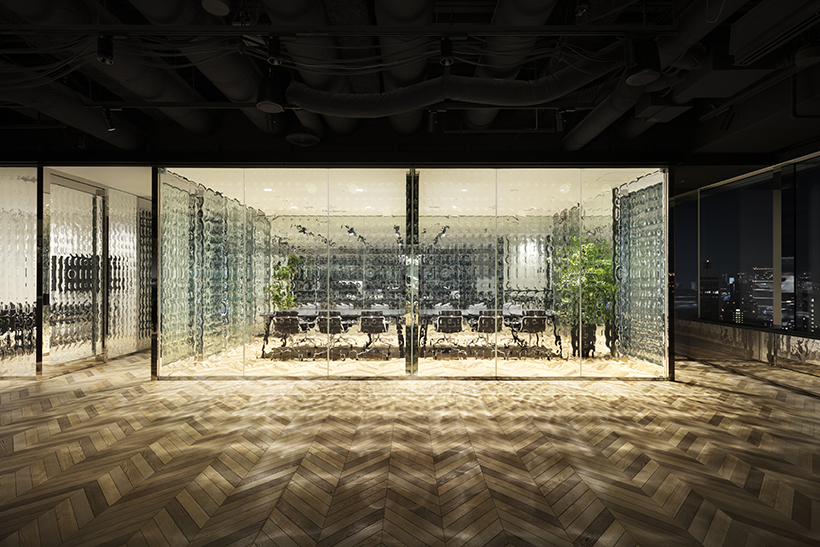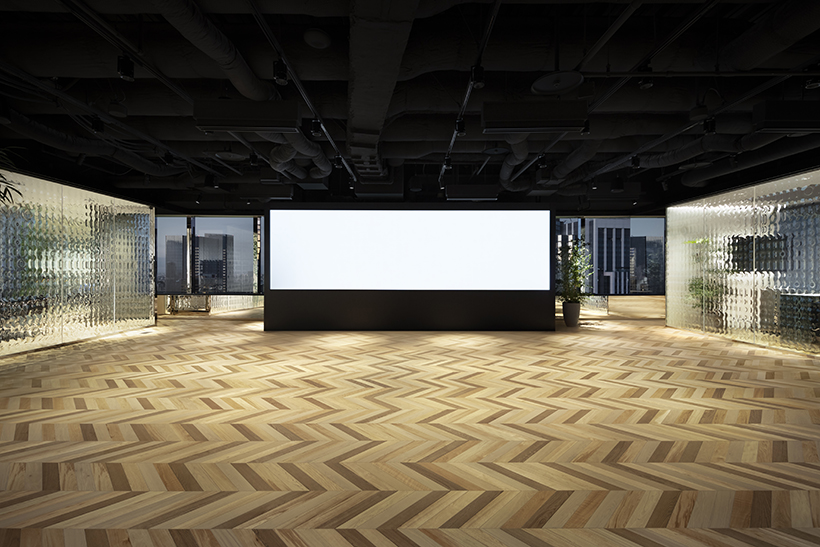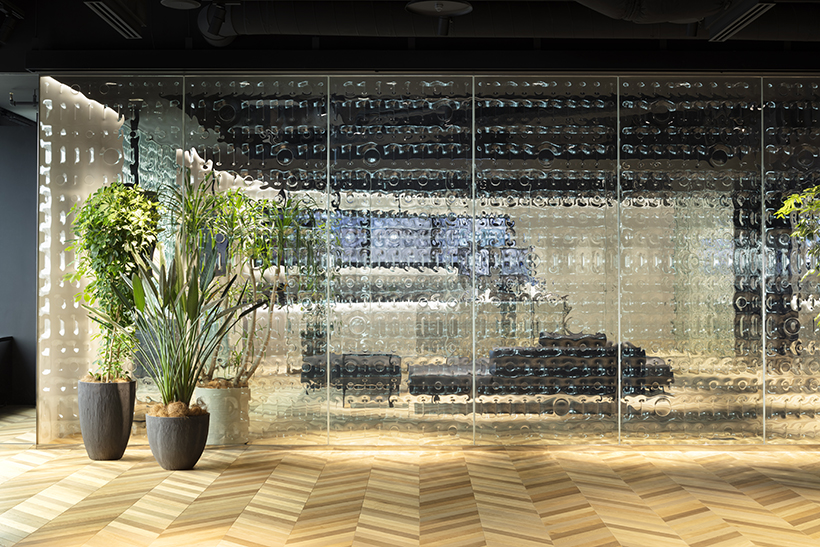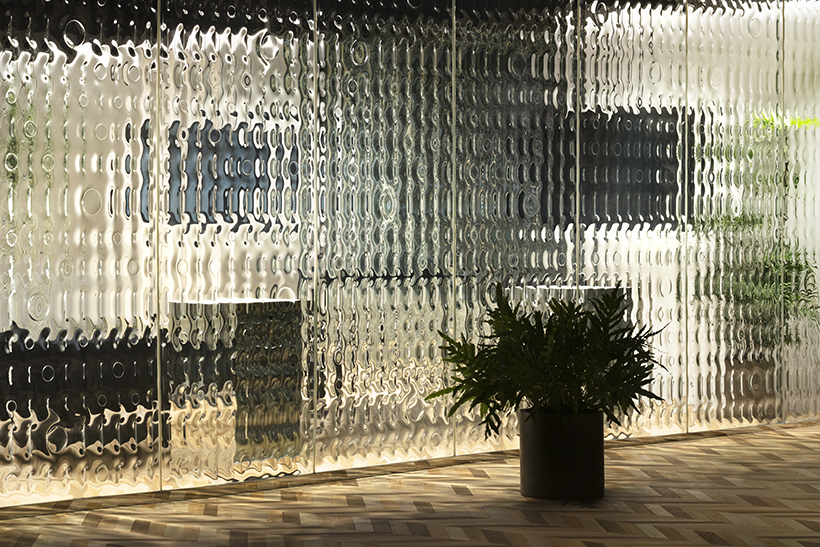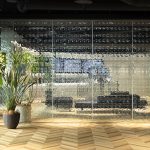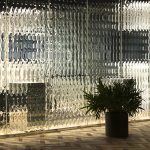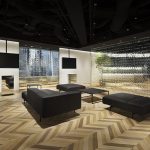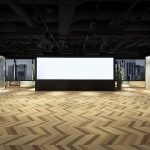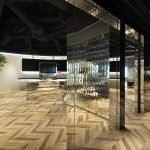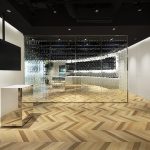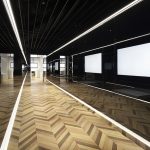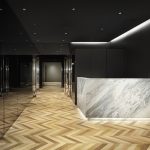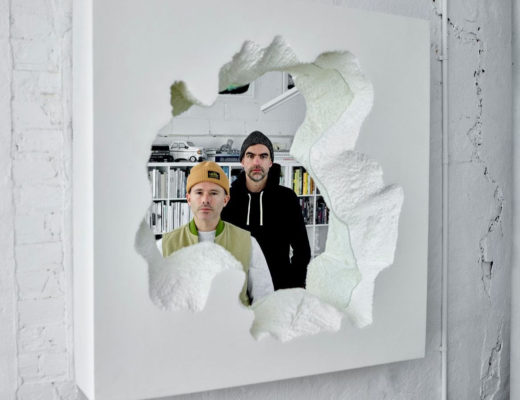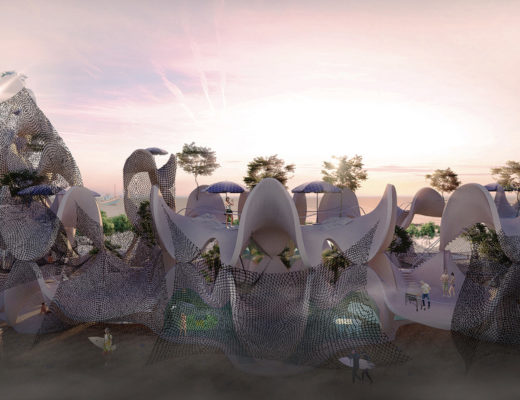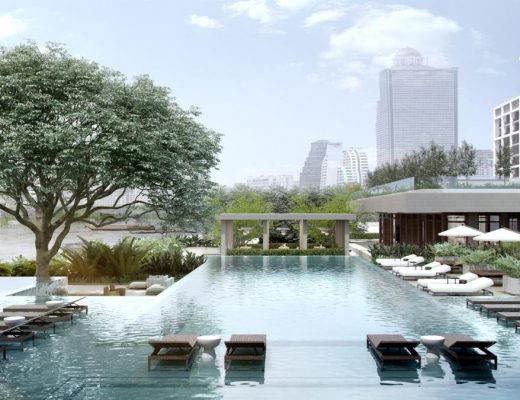Nendo has designed a new Internet of Things Center within the offices of global management consulting firm McKinsey in Tokyo’s Roppongi district. The new centre has three galleries and a lounge area to showcase new digital technologies, a multipurpose space to hold seminars and events, as well as office functions such as meeting rooms and a workspace.
Derived from the fact that in the digital world, every piece of information is converted into combinations of “0” and “1” before it is stored and reproduced, the interior was formed by transparent glass partitions that have a fluid, textured surface made of “0”s and “1”s.
In order to secure tensile strength, laminated glass composed of two layers was used and four layers of film were inserted between the two glass layers to give a shatterproof effect. The textured surface was formed by placing the glass plate on a stainless-steel mould and applying heat to the glass to make it soft, thereby applying the pattern to the molted glass which deflects by its own weight.
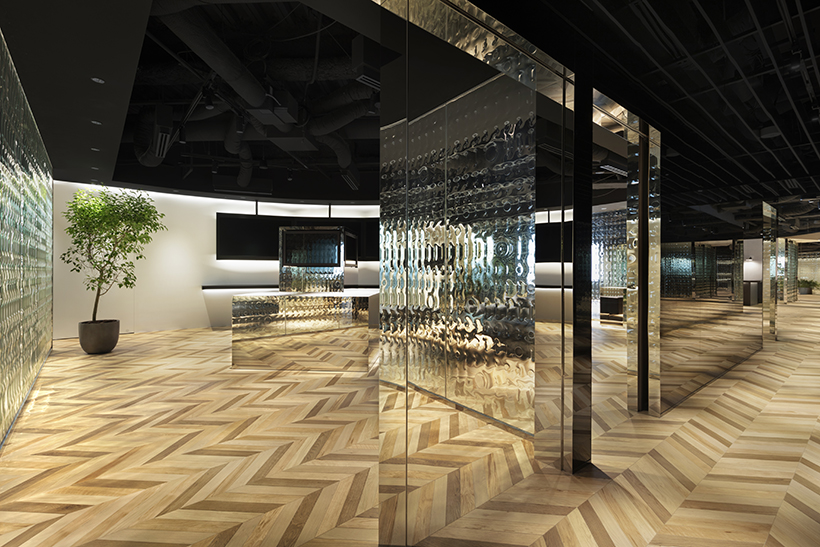
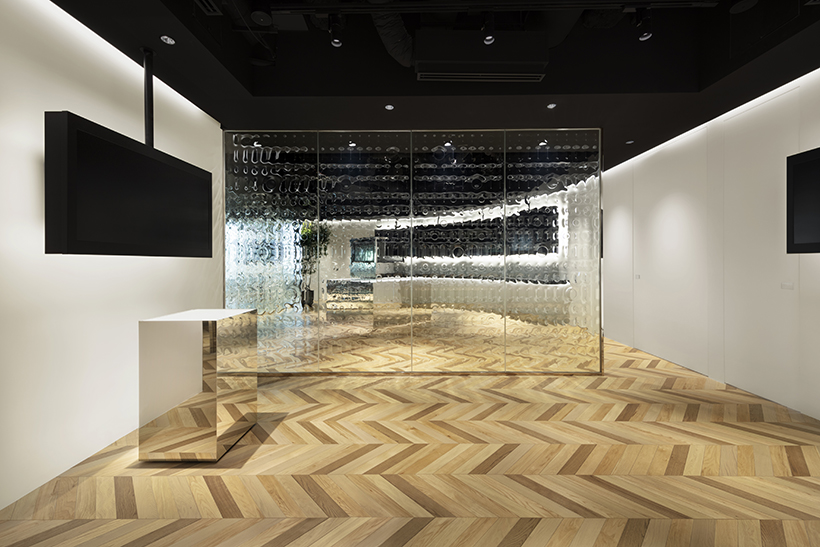
Various thicknesses and shapes were considered for the edges of the mould, and eventually, in order to minimise contact with the glass, a 3mm sharply polished edge was used. Although the two sheets of glass were heat-processed simultaneously, one sheet was 8mm thick while the other was 6mm thick, thereby enabling the two surfaces to be joined more precisely and also enabling the minimisation of occurrence of air bubbles.
You might also like:
Nendo designs Tokyo house with curved staircase that connects interior with exterior
Urbanscape Architects designs sustainable office and industrial facility for Indian stone supplier
Vietnamese firm Kientruc O designs its office with completely natural cooling and ventilation
Since suction cups could not be used on the glass plate during the installation process due to its textured surface, it took twice the manpower than normally required for moving and placing them, leading to an extremely time-consuming construction.
When walking around the completed space, the landscape spreading outside the window and the exhibits, plants and signs of visitors appear in distorted layers. The intention was to express the future of IoT, a fusion of digitalism and reality, through this scenery where real and virtual images are integrated harmoniously.
See the full image gallery here:
Photos: Takumi Ota

